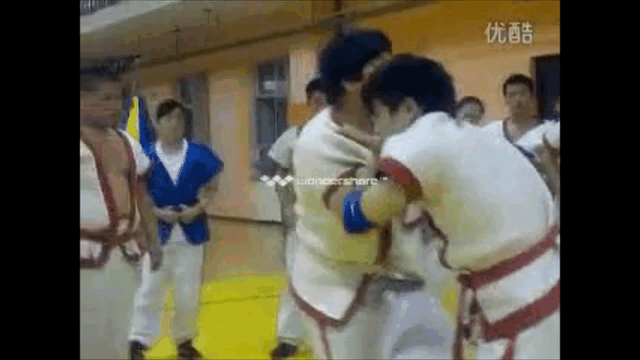To the question, What is the measure stick of Wing Chun?, you responded:
One point worth remembering is that Wing Chun, at least in most Yip Man branches, defines itself as much by what it has omitted as by what it includes. Wing Chun instead is presented as a pragmatic distillation of the older, Shaolin styles ...a tight and efficient system rather than an all inclusive collection with every kind of technique.
Now you might not agree with this philosophy, or see it as a "sales pitch", and you might point out that looking at Wing Chun in the broader context of Southern Chinese martial arts will deepen your understanding. And you may have a point. But that's not how most Wing Chun people see it.
Instead they will point out that unlike the storied Shaolin Monk who is supposed to have devoted his life to his religious and martial disciplines, our time is limited and better spent focusing on perfecting a narrower, more practical curriculum.
So, no, a Wing Chun "master" need not study other Shaolin rooted systems deeply ...beyond what is necessary to know your enemy and yourself.
Learn Wing Chun not Chinese. If you want to learn Chinese, it is better to learn Mandarin. That you can use more. Besides, many so-called Wing Chun people do speak Cantonese and still they know nothing, so do not waste your time!
I disagree. Wing Chun's origin myth does tie it to Southern Shaolin. And historically, Wing Chun has links to Fukien Crane and Hakka systems. Certainly, any scholar of the system would want to investigate these connections. But that isn't the "measure stick" or metric for mastery.A strong understanding of a blend of several different Shaolin animal styles.
One point worth remembering is that Wing Chun, at least in most Yip Man branches, defines itself as much by what it has omitted as by what it includes. Wing Chun instead is presented as a pragmatic distillation of the older, Shaolin styles ...a tight and efficient system rather than an all inclusive collection with every kind of technique.
Now you might not agree with this philosophy, or see it as a "sales pitch", and you might point out that looking at Wing Chun in the broader context of Southern Chinese martial arts will deepen your understanding. And you may have a point. But that's not how most Wing Chun people see it.
Instead they will point out that unlike the storied Shaolin Monk who is supposed to have devoted his life to his religious and martial disciplines, our time is limited and better spent focusing on perfecting a narrower, more practical curriculum.
So, no, a Wing Chun "master" need not study other Shaolin rooted systems deeply ...beyond what is necessary to know your enemy and yourself.
Again I have to disagree even though I'm a person with a lot of curiosity, and I like learning the Cantonese names for techniques. Sometimes it has helped me understand better. But, as to whether that is really necessary, I remember what my old Cantonese speaking Chinese Sifu would say:Terminology is important. Some Wing Chun teachers seem to only know a few technique names in Cantonese. Compare them to someone who knows hundreds, and whole phrases, and where they belong.
Learn Wing Chun not Chinese. If you want to learn Chinese, it is better to learn Mandarin. That you can use more. Besides, many so-called Wing Chun people do speak Cantonese and still they know nothing, so do not waste your time!

